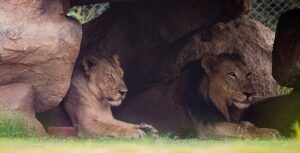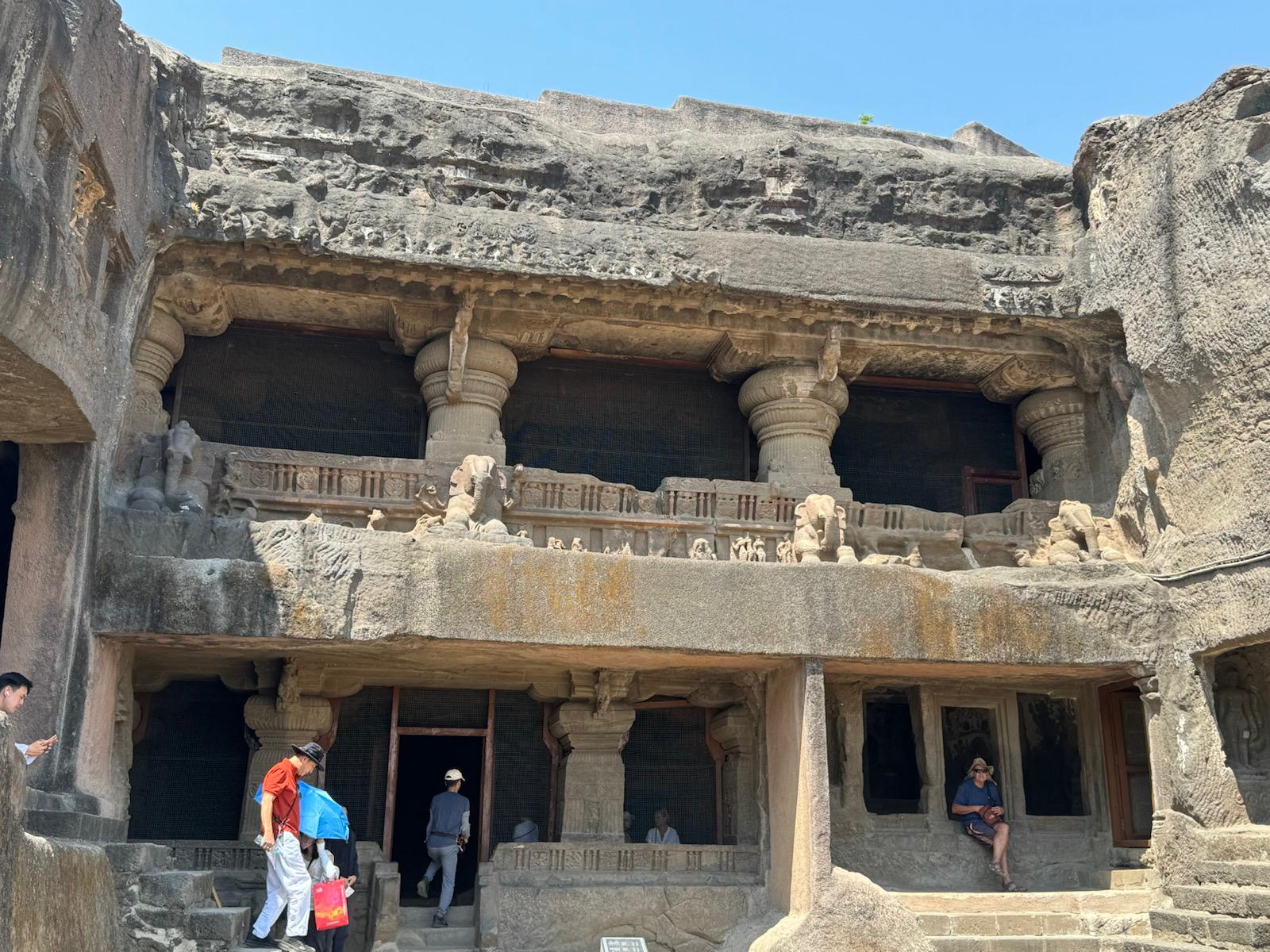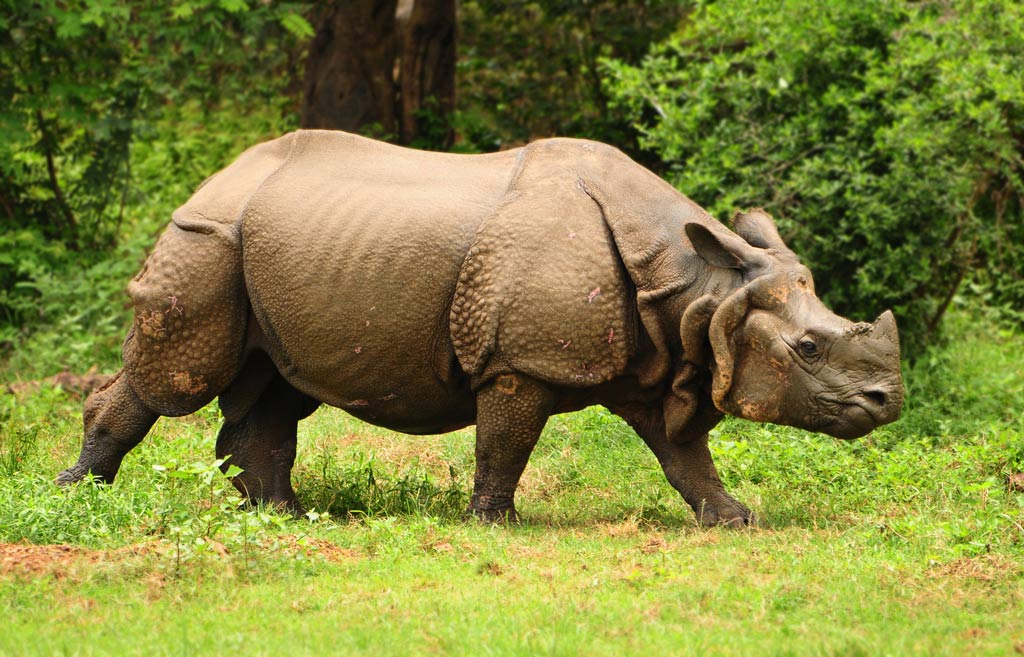On the plains of Gujarat: meeting Asiatic lions
Exploring the Great Plains of Gujarat: Meet the Asiatic lions: Imagine yourself on the vast golden plains of Gujarat, surrounded by an endless expanse of savannah and rolling hills, in the ultimate sanctuary of the Asiatic lion. Gir National Park, with its wild landscapes and sparse forests, is much more than just a nature park; it is the last refuge of these majestic felines, which have a special place in the world’s wildlife. An exploration of Gir is an immersion in a world where conservation meets adventure, where every safari is a chance to reconnect with nature and take part in a global effort to save an endangered species.
Gir : The last bastion of the Asian lion
Gir National Park
in the state of Gujarat, north-west India
northwestern India
is a must-see destination for nature and safari enthusiasts in India. It is the world’s last refuge for the Asiatic lion, which can still be observed in its natural habitat. Covering some 1,412 square kilometers, Gir is a fascinating patchwork of dry plains, hills and sparse forests. This unique landscape of Gujarat wildlife is crucial to the survival of the Asiatic lion, whose population is now confined to this exceptional region.
Asiatic lions were once widespread across Asia, but over-hunting and habitat loss have dramatically reduced their numbers. Today, around 600 Asiatic lions live in Gir National Park, representing the entire world population. This concentration of endangered individuals underlines Gir’s importance not only as a biodiversity sanctuary, but also as an Asiatic lion conservation site of vital importance to ecotourism in Gujarat.

Le Safari à Gir: A breathtaking encounter
A Gir safari is much more than just an adventure; it’s an immersion in a fascinating ecosystem where every moment is filled with magic and discovery. From the moment you enter the park, the sensation of being in the heart of the wilderness is palpable. Safaris are generally conducted by jeep or all-terrain vehicle, with experienced guides who know the terrain and lion behavior like the back of their hand.
The guides play a vital role, not only helping you spot the lions but also sharing information about their behavior, ecology and conservation efforts. Their in-depth knowledge of the park and its inhabitants makes all the difference, turning every excursion into a real wildlife lesson.
When you finally catch sight of an Asiatic lion, it’s an awe-inspiring moment. Lions are often seen in family groups, called prides, made up of members related by blood. You might see adult lions lounging in the shade of a tree, cubs playing in the tall grass, or even a hunt in progress. These moments offer a rare glimpse into the daily lives of these majestic felines, and a measure of their power and grace.
But a safari at Gir isn’t just a quest for lions. The park is home to an impressive diversity of wildlife, including leopards, hyenas, jackals and birds such as vultures and peacocks. Observing these species in their natural habitat enriches the experience and underlines the importance of every link in this complex ecosystem.
Conservation efforts: Saving the Asiatic lion
The conservation of the Asiatic lion is one of the most notable achievements of wildlife protection in the modern world. In the late 1960s, when the Asiatic lion population was in critical danger of extinction, drastic protection measures were put in place to save the species.
Today, Gir National Park is the center of these conservation efforts. The protected area was created to provide a secure habitat for lions, away from the threats of poaching and habitat loss. Conservation efforts include rigorous surveillance, with regular anti-poaching patrols, and habitat management measures to maintain the park’s ecological balance.
Veterinarians and biologists also play a crucial role in lion preservation. They monitor the lions’ health, treat disease and intervene when necessary. Data collected from GPS collars and trap cameras provide vital information on lion movements and behavior, helping to adapt conservation strategies in real time.
A key aspect of conservation is the management of conflicts between lions and humans. Local populations are directly affected by the presence of lions, particularly through attacks on livestock. To reduce these conflicts, awareness programs are set up to educate local communities about lions and their crucial role in the ecosystem. Initiatives such as the construction of protective fencing for livestock and the development of alternative livelihood methods also help to ease tensions.
Current challenges and the future of Asian lions
Despite conservation successes, many challenges remain to ensure the survival of Asiatic lions. Urban expansion and deforestation continue to threaten their habitat. Growing demographic pressure and the need for agricultural land are jeopardizing the natural lands that are essential to the lions’ existence.
To meet these challenges, long-term management plans are underway. The expansion of protected areas and the creation of ecological corridors enable lions to move between different habitats, reducing the risk of inbreeding and increasing the population’s chances of survival. International conservation efforts, involving partnerships with global organizations, researchers and funds, also play a crucial role in protecting this iconic species.
The impact of ecotourism: Essential support for conservation
Ecotourism is an important component of conservation efforts at Gir. Tourist visits not only raise awareness of the beauty and need to protect Asiatic lions, but also generate vital revenue to fund conservation projects. Each visit contributes directly to the preservation of the park and support for local initiatives.
Local guides, often from the surrounding communities, also benefit from ecotourism. They play an essential role in protecting and managing the park, while improving their quality of life through the economic opportunities offered by tourism. This synergy between conservation and local development is crucial to ensuring the long-term sustainability of preservation efforts.
Conclusion: An adventure worth preserving
Exploring the great plains of Gujarat and meeting Asiatic lions in Gir National Park is much more than just an adventure; it’s an immersion into a world where nature and conservation meet in spectacular fashion. Each safari is a unique chance to discover the majesty of these iconic felines and to contribute to their conservation efforts.
Gir Park represents a symbol of hope for the world’s wildlife, demonstrating what can be achieved through dedicated conservation efforts and careful management of natural resources. By supporting conservation efforts and participating in responsible ecotourism, we are all helping to secure a future for the Asiatic lion and preserve the Great Plains of Gujarat for future generations.
So when you venture into Gir’s savannahs, remember that every moment spent in this land of wild majesty is a celebration of nature’s resilience and a call to continue protecting our planet. Asia’s big cats continue to rule these plains, a constant reminder of the rugged beauty that deserves to be preserved and celebrated.





